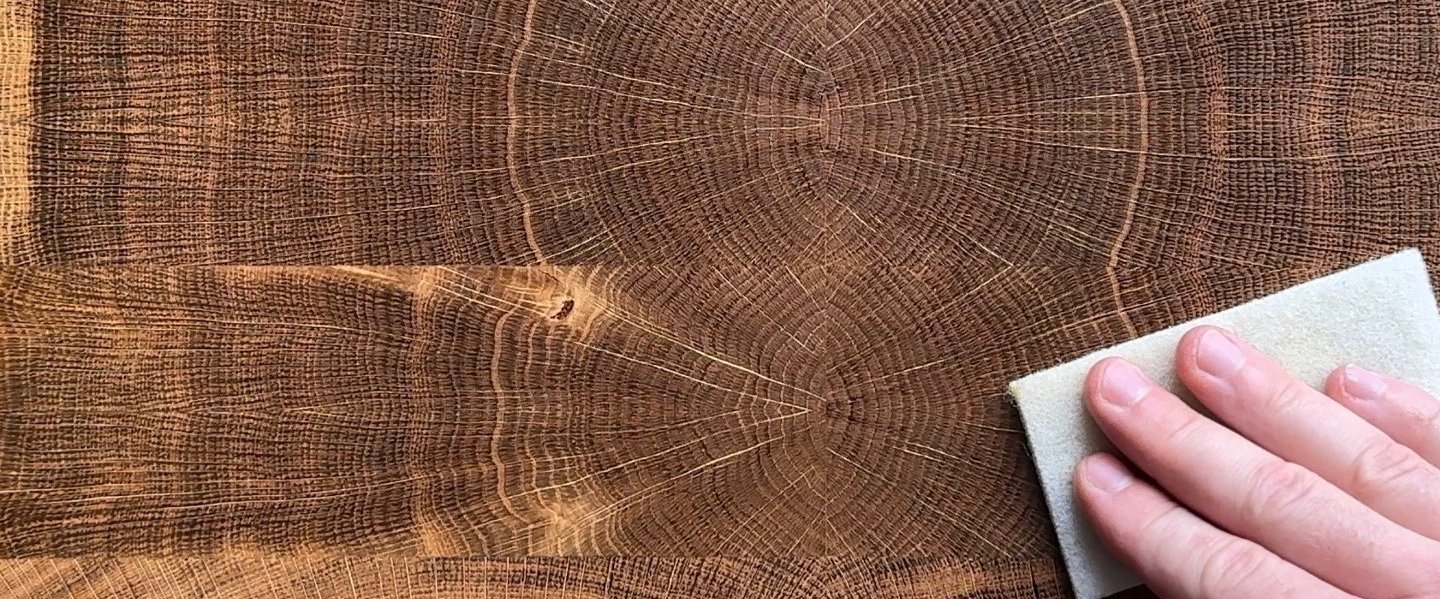
cleaning and maintenance
To be able to enjoy your new piece of furniture for as long as possible, proper cleaning and maintenance are essential. Regular maintenance will preserve the beauty and natural look of your furniture.
Oiled Wood Surfaces
The wood oil used for your furniture is resistant to dirt, moisture, and temperature fluctuations. Nevertheless, when dealing with solid, naturally treated wood, keep the following in mind:
Regular Cleaning
Remove dust and loose dirt with a dry or slightly damp cotton cloth. Avoid using microfiber cloths.
Spilled Liquids
Immediately remove and dry any spilled liquids (e.g. beverages) to prevent them from penetrating the wood. Use coasters to prevent water rings.
Precautions and Care
Avoid placing sharp or pointed objects on the surface to prevent indentations.
Removing Light Stains
For light stains, use a neutral cleaner on a damp cotton cloth or wood soap to clean the surface. It's advisable to test the cleaning agent on an inconspicuous area for any wood discoloration or similar effects.
Tips for applying Oil
Oiled wood surfaces require regular re-oiling. It is recommended to oil the surface 1-2 times a year, depending on usage. Use oils specifically designed for furniture and follow the manufacturer's instructions.
To re-oil, apply some wood oil on a white cotton cloth and evenly spread it on the surface. After applying the oil, wipe the cloth evenly in the direction of the wood grain to remove excess oil.
Allow the oil to soak in for approximately 10-15 minutes, then polish the surface thoroughly with a dry, lint-free cloth. Check for any greasy spots after another 15 minutes and rework them if necessary.
Remember to treat the underside as well to avoid uneven drying, which can lead to cracks and warping in the wood.
Allow the surface to fully dry before using the furniture again.
Warning
Oil-soaked rags, polishing pads, and paper must be immediately soaked in water and hung outdoors, as there is a risk of spontaneous combustion!
Soaped Wood Surfaces
Treating the surface with wood soap creates a very natural-looking wood surface with a pleasant, soft feel. The soaped surface provides protection against dirt and moisture penetration. This method is safe and easy to perform, and soaped woods exhibit excellent ecological properties.
Tips for applying soap
Start by removing dust and loose dirt by gently dusting the surface with a slightly damp cotton cloth.
Shake the bottle of wood soap before use and dilute it with lukewarm water according to the manufacturer's instructions.
Dip the cloth into the soapy solution, wring it out thoroughly, then wipe the surface with the damp cloth. Avoid leaving puddles.
Remember to treat the underside as well to avoid uneven drying, which can lead to cracks and warping in the wood.
Allow the surface to fully dry before using the furniture again.
Glass
Natural Cleaning Agents
If you prefer natural cleaning agents, you can create a mixture of vinegar and water in a 1:1 ratio. Spray the mixture on the glass surface and wipe it with a clean cloth.
Gentle Cleaning Agents
Use mild cleaning agents specifically designed for glass surfaces. Avoid abrasive or abrasive cleaning agents as they may scratch the glass.
Avoid Sharp Objects
Avoid using sharp objects or tools to remove stubborn stains, as they can damage the glass. Instead, use gentle cleaning techniques.
Use Microfiber Cloths
Use soft microfiber cloths or special glass cleaning cloths to remove dust, dirt, and fingerprints from the glass surface. These cloths are gentle and leave no streaks.
Cleaning should always be done over a large area without applying pressure.
Furniture Linoleum
Removing Loose Dust and Dirt
Lose dust and dirt can be removed by using dust-binding cloths or vacuuming.
Removing Stubborn Stains
To remove stubborn stains, dissolve a suitable cleaning agent for linoleum, following the manufacturer's instructions. Soak a soft cloth in the cleaning solution, wring it out well, and clean the linoleum surface.
Removing Persistent Dirt and Stains
For persistent dirt and stains, apply undiluted cleaning solution to a soft cloth and clean the affected areas. If needed, use a white cleaning pad. Absorb the dissolved dirt with a clean, absorbent cloth, and then lightly wipe the surface with a damp cloth soaked in clear water.
Cleaning and Care Products, Accessories
Disposable dust cloths or dust-binding cloths
Vacuum cleaner with furniture/upholstery nozzle
Neutral cleaner or special cleaner (pH < 9) for linoleum (e.g., "Harell" Cleaning and Care Set for Linoleum)
Pflegeemulsion (e.g., "Harell" Cleaning and Care Set for Linoleum) for refreshing dull surfaces
Special Notes:
During the post-oxidation phase, linoleum may develop a "yellowish" tint called the "dryer film." This is particularly noticeable in light colors but will completely disappear with exposure to UV light, restoring the original color of the linoleum. However, if the surface is covered with monitors, mouse pads, etc., for an extended period, the "yellowish" tint may reappear. It will vanish again when the surface is exposed to daylight. The dryer film cannot be removed through cleaning.
Terracotta or clay pots can cause discoloration on linoleum; please use suitable coasters.
Hand and equipment disinfectants with high solvent content may cause staining; if linoleum needs to be disinfected, use a surface disinfectant specifically suitable for linoleum and test it on a sample piece or an inconspicuous area first.

